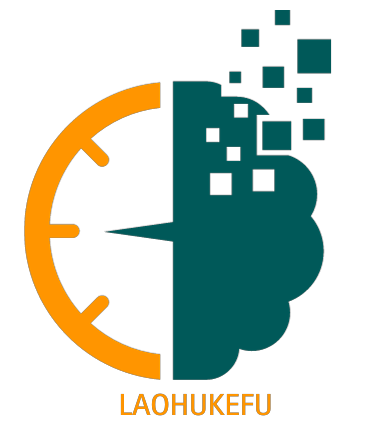Traveling to Asia is an exciting adventure, filled with unique cultures, stunning landscapes, and mouth-watering cuisines. But as you embark on your journey, one of the key considerations for many travelers is staying connected—whether it’s for navigation, staying in touch with loved ones, or accessing essential travel apps tourist esim asia. In the past, getting a local SIM card was the go-to solution. But with the rise of eSIM technology, staying connected in Asia has never been easier or more convenient.
In this guide, we’ll explore how eSIMs can revolutionize your travel experience in Asia and how to make the most of this game-changing technology.
What Is an eSIM?
An eSIM (Embedded SIM) is a digital SIM card that’s built into your phone, meaning you no longer need a physical SIM card to connect to a mobile network. This technology allows users to activate a cellular plan without needing to swap out SIM cards.
For travelers, this offers significant advantages: no more hunting for a local SIM at the airport or dealing with the hassle of changing cards every time you move between countries. With an eSIM, you can simply download a plan to your device and switch between networks or countries with just a few taps.
Why Should You Use an eSIM for Travel in Asia?
1. Convenience: No More SIM Card Hassles
Gone are the days of waiting in line at kiosks or dealing with confusing SIM card requirements in a foreign language. With an eSIM, all you need is a stable Wi-Fi connection to download your plan directly to your phone. This means you can skip the frustration of dealing with local telecom providers and avoid the risk of purchasing the wrong plan.
2. Cost-Effective
Traveling in Asia can be affordable, but mobile roaming charges can quickly add up. eSIMs often offer competitive rates for international data, and many providers offer regional or multi-country plans that can help you save. Rather than paying hefty roaming fees or buying new SIM cards for each destination, you can get a flexible, pay-as-you-go plan that works across multiple countries.
3. Multiple Profiles for Seamless Switching
One of the coolest features of eSIM technology is the ability to store multiple profiles on a single device. For example, you can have a local eSIM for your destination in Japan, another for Thailand, and yet another for your home country. Switching between these profiles is easy, and you don’t have to worry about swapping out physical SIM cards when you move around.
4. No More Lost or Stolen SIM Cards
Since eSIMs are digital, there’s no risk of losing or damaging a physical SIM card. Plus, if you’re traveling through multiple countries, you don’t have to worry about keeping track of several cards. It’s all managed digitally, which can offer peace of mind as you explore new regions.
How Does eSIM Work in Asia?
Step-by-Step Guide to Using eSIM in Asia
- Check Compatibility: Before you can use an eSIM, make sure your phone is eSIM-compatible. Most recent models of iPhones (from the iPhone XS and newer) and many Android devices (such as Google Pixel, Samsung Galaxy, and others) support eSIM functionality. Check your device settings to ensure that it’s enabled.
- Choose an eSIM Provider: Several global and regional providers offer eSIM plans for travelers. Some of the most popular services for travelers to Asia include:
- Airalo: A popular eSIM provider with country-specific, regional, and global plans. Airalo offers affordable data packages in numerous Asian countries, making it a great choice for both short and long-term travel.
- Nomad: Nomad provides flexible eSIM options with a focus on travel. It’s known for offering reliable coverage across Asia with easy activation and a variety of data packages.
- Truphone: Truphone offers eSIM data packages for multiple countries, with coverage across many Asian nations. It’s great for travelers who need a wide range of options in one plan.
- GigSky: Specializing in global travel data, GigSky offers excellent coverage in Asia, with plans designed for travelers heading to specific regions.
- Download Your eSIM Plan: Once you’ve selected a provider, download the eSIM app or go through the provider’s website to purchase your data plan. After your purchase, the provider will send you a QR code. Simply scan the code using your phone’s camera (in the settings section under “Mobile Network” or “Cellular” settings), and you’re good to go.
- Activate Your Plan: After scanning the QR code, follow the instructions on your phone to activate your eSIM. Most plans will be activated almost immediately, and you’ll receive confirmation once the plan is ready to use. You can then manage your eSIM profile and switch between local and international plans seamlessly.
- Monitor Data Usage: Be sure to keep track of your data usage through the provider’s app or your phone’s settings. Some plans offer unlimited data, while others are based on specific data allotments, so it’s always a good idea to monitor your usage to avoid overages.
Top Countries in Asia Where eSIM is a Game-Changer
Japan: With eSIM compatibility now widespread, Japan offers a range of local and international eSIM options. Whether you’re in Tokyo or Osaka, you’ll have access to reliable mobile data for navigation, translation apps, and social media.
Thailand: Thailand is a popular destination for digital nomads and tourists alike, and eSIMs offer an easy way to stay connected without having to visit a SIM card kiosk. Many service providers in Thailand now offer eSIM support, and coverage is strong in both urban and rural areas.
India: India’s mobile network infrastructure has rapidly advanced, and eSIM technology is increasingly becoming available. Whether you’re in major cities like Delhi or Mumbai or exploring rural regions, using an eSIM gives you more flexibility.
Singapore: Singapore has been at the forefront of mobile technology, and eSIM services are readily available. Travelers can easily connect to high-speed 4G or 5G networks for seamless communication and internet access.
Indonesia: Bali and other popular tourist destinations in Indonesia are becoming more eSIM-friendly, with providers like Telkomsel offering affordable eSIM plans to tourists, making it easier to stay connected while exploring.
Things to Keep in Mind When Using an eSIM in Asia
- Not All Countries Offer eSIM Coverage: While eSIM adoption is growing in Asia, not every country supports the technology. It’s always best to check whether your destination supports eSIM services beforehand.
- Roaming Charges: Some eSIM providers offer regional packages, but be mindful of roaming charges if you’re traveling between countries. While Asia is generally well-connected, you may want to download a separate plan if you’re hopping between many nations.
- Activation Requires Wi-Fi: You’ll need access to Wi-Fi to activate your eSIM and download the plan. Be sure to plan ahead and find a reliable Wi-Fi connection when you arrive at your destination.
Conclusion
eSIM technology has made staying connected in Asia easier than ever, offering travelers a more flexible, convenient, and cost-effective alternative to traditional SIM cards. Whether you’re visiting one country or hopping between multiple destinations, eSIMs provide seamless connectivity and a hassle-free experience that allows you to focus on what really matters—your travel adventure.

